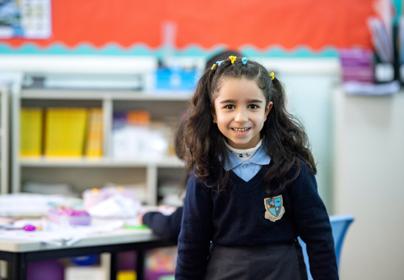1. One-on-one time
- Set aside time to spend with each child
It can be for just 20 minutes, or longer – it’s up to us. It can be at the same time each day so children or teenagers can look forward to it.
- Ask your child what they would like to do
Choosing builds their self-confidence. If they want to do something that isn’t OK with physical distancing, then this is a chance to talk with them about this.
- Ideas with your baby/toddler
Copy their facial expression and sounds.
Sing songs, make music with pots and spoons.
Stack cups or blocks.
Tell a story, read a book or share pictures.
- Ideas with your young child
Read a book or look at pictures.
Make drawings with crayons or pencils.
Dance to music or sing songs!
Do a chore together – make cleaning and cooking a gameHelp with school work.
Ideas with your teenager
Talk about something they like: sports, music, celebrities, friends.
Cook a favorite meal together.
Exercise together to their favorite music.
Listen to them, look at them.
Give them your full attention. Have fun!
2. Keeping it positive
- Say the behaviour you want to see
Use positive words when telling your child what to do; like "Please put your clothes away" (instead of "Don’t make a mess").
- It’s all in the delivery
Shouting at your child will just make you and them more stressed and angrier. Get your child’s attention by using their name. Speak in a calm voice.
- Praise your child when they are behaving well
Try praising your child or teenager for something they have done well. They may not show it, but you’ll see them doing that good thing again. It will also reassure them that you notice and care.
- Get real
Can your child actually do what you are asking them? It is very hard for a child to keep quiet inside for a whole day but maybe they can keep quiet for 15 minutes while you are on a call.
- Help your teen stay connected
Teens especially need to be able to communicate with their friends. Help your teen connect through social media and other safe distancing ways. This is something you can do together, too!
3. Keep calm and manage stress
This is a stressful time. Take care of yourself, so you can support your children.
- You are not alone
Millions of people have the same fears as us. Find someone who you can talk to about how you are feeling. Listen to them. Avoid social media that makes you feel panicked.
- Take a break
We all need a break sometimes. When your children are asleep, do something fun or relaxing for yourself. Make a list of healthy activities that YOU like to do. You deserve it!
- Listen to your kids
Be open and listen to your children. Your children will look to you for support and reassurance. Listen to your children when they share how they are feeling. Accept how they feel and give them comfort.
- Take a pause
Here's a one-minute relaxation activity that you can do whenever you are feeling stressed or worried.
Step 1: Set up
- Find a comfortable sitting position, your feet flat on the floor, your hands resting in your lap.
- Close your eyes if you feel comfortable.
Step 2: Think, feel, body
- Ask yourself, “What am I thinking now?”
- Notice your thoughts. Notice if they are negative or positive.
- Notice how you feel emotionally. Notice if your feelings are happy or not.
- Notice how your body feels. Notice anything that hurts or is tense.
Step 3: Focus on your breath
- Listen to your breath as it goes in and out.
- You can put a hand on your stomach and feel it rise and fall with each breath.
- You may want to say to yourself “It’s okay. Whatever it is, I am okay.”
- Then just listen to your breath for a while.
Step 4: Coming back
- Notice how your whole body feels.
- Listen to the sounds in the room.
Step 5: Reflecting
- Think ‘do I feel different at all?’.
- When you are ready, open your eyes. Be open and listen to your children. Your children will look to you for support and reassurance. Listen to your children when they share how they are feeling. Accept how they feel and give them comfort.
Taking a pause can also be helpful when you find your child is irritating you or has done something wrong. It gives you a chance to be calmer. Even a few deep breaths or connecting with the feeling of the floor beneath can make a difference. You can also take a pause with your children!
4. Talking about COVID-19
Be willing to talk. They will already have heard something. Silence and secrets do not protect our children. Honesty and openness do. Think about how much they will understand. You know them best.
- Be open and listen
Allow your child to talk freely. Ask them open questions and find out how much they already know.
- Be honest
Always answer their questions truthfully. Think about how old your child is and how much they can understand.
- Be supportive
Your child may be scared or confused. Give them space to share how they are feeling and let them know you are there for them.
- It is OK not to know the answers
It is fine to say “We don’t know, but we are working on it; or we don’t know, but we think.” Use this as an opportunity to learn something new with your child!
- Heroes not bullies
Explain that COVID-19 has nothing to do with the way someone looks, where they are from, or what language they speak. Tell your child that we can be compassionate to people who are sick and those who are caring for them. Look for stories of people who are working to stop the outbreak and are caring for sick people.
- There are a lot of stories going around
Some may not be true. Use trustworthy sites like UNICEF and the World Health Organization.
- End on a good note
Check to see if your child is okay. Remind them that you care and that they can talk to you anytime. Then do something fun together!




